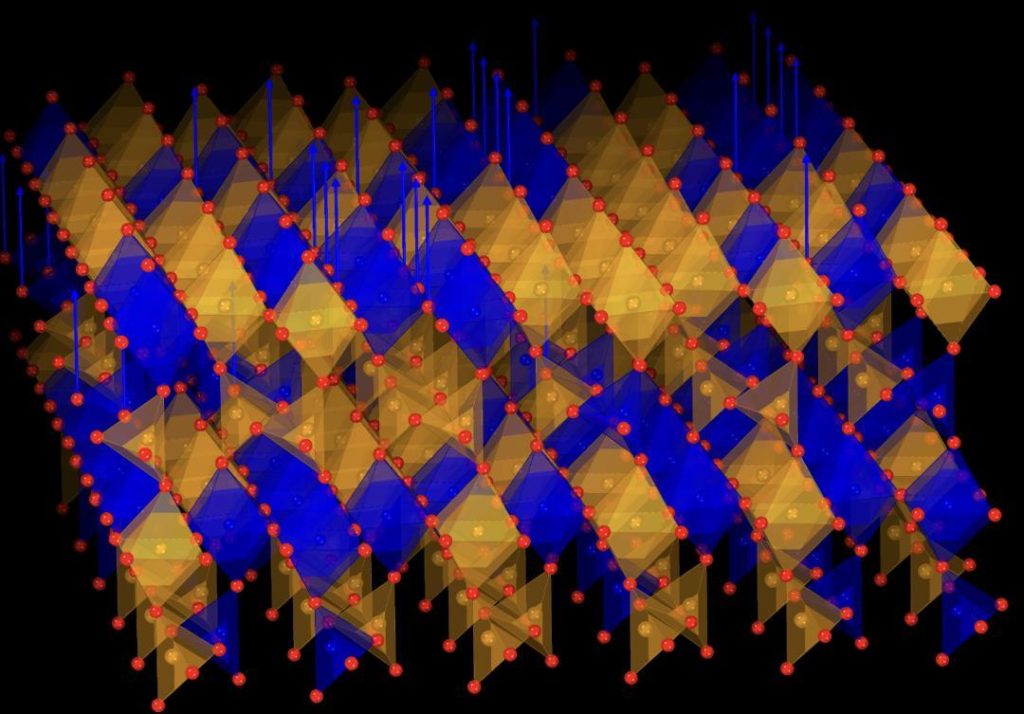
Scientists Discover New Material that ‘Breathes’ Oxygen
In a groundbreaking discovery, a team of scientists has created a new material that can “breathe” oxygen, releasing and absorbing it at relatively low temperatures. This breakthrough has significant implications for clean energy technologies and could potentially be used in next-generation electronics.
The new crystal is made of strontium, iron, and cobalt, and is a type of metal oxide. This unique material has a special property that allows it to exchange oxygen with its surroundings, making it an ideal candidate for various applications.
The discovery was made by a team of researchers from Hokkaido University in Japan, who published their findings in the journal Nature Communications. According to the study, the new material can release and absorb oxygen at temperatures as low as -200°C, which is significantly lower than previously known materials.
This property makes the new material potentially useful for a range of applications, including clean energy technologies and next-generation electronics. For example, it could be used to create more efficient solar panels or fuel cells, or to develop new types of batteries that are more environmentally friendly.
The material’s ability to “breathe” oxygen is due to its unique crystal structure, which is made up of layers of strontium, iron, and cobalt atoms. This structure allows the material to release and absorb oxygen molecules, making it an ideal candidate for applications that require high levels of oxygen exchange.
The discovery of this new material is significant because it opens up new possibilities for the development of clean energy technologies. Traditional energy storage systems, such as batteries, are often limited by their ability to release and absorb oxygen. This new material, however, could potentially be used to create more efficient and environmentally friendly energy storage systems.
Additionally, the material’s ability to “breathe” oxygen makes it an attractive candidate for use in next-generation electronics. For example, it could be used to create more efficient and environmentally friendly devices, such as smartphones or laptops.
The researchers behind the discovery are excited about the potential applications of this new material. “This is a major breakthrough in the field of materials science,” said Dr. Takashi Mori, the lead researcher on the project. “The ability of this material to ‘breathe’ oxygen opens up new possibilities for the development of clean energy technologies and next-generation electronics.”
The discovery of this new material is also significant because it was made using a relatively simple and cost-effective process. The researchers used a technique called sol-gel processing to create the material, which involves mixing a solution of metal salts with a solvent and then drying it to create a gel-like substance. This process is relatively inexpensive and can be scaled up to produce large quantities of the material.
In conclusion, the discovery of a new material that can “breathe” oxygen is a significant breakthrough in the field of materials science. This material has the potential to be used in a range of applications, including clean energy technologies and next-generation electronics. Its ability to release and absorb oxygen at relatively low temperatures makes it an attractive candidate for these applications.
The discovery was made by a team of researchers from Hokkaido University in Japan, who published their findings in the journal Nature Communications. The researchers used a technique called sol-gel processing to create the material, which involves mixing a solution of metal salts with a solvent and then drying it to create a gel-like substance.
The implications of this discovery are significant, and it is likely that we will see further research and development in this area in the coming years. As technology continues to advance, we can expect to see new and innovative applications of this material emerge.






